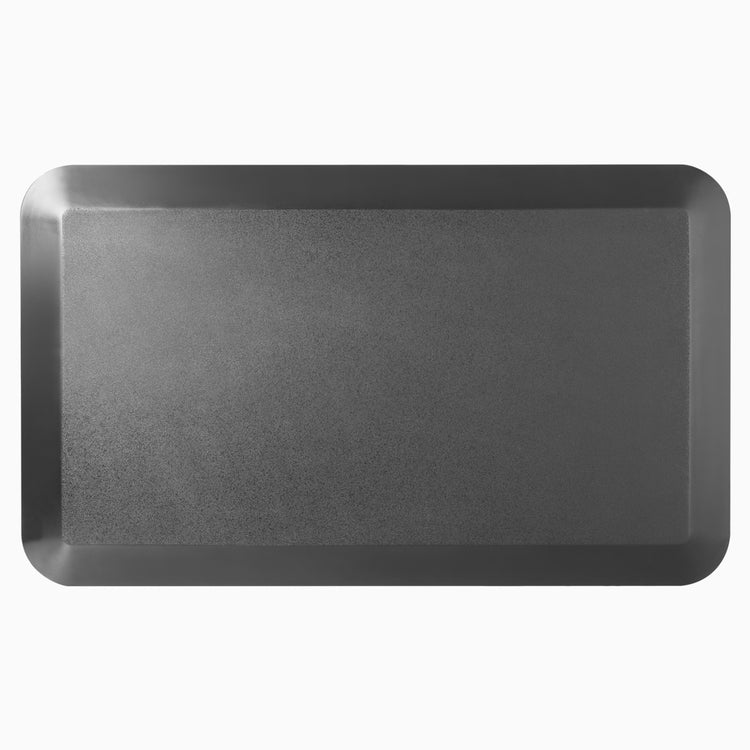Fast & Free Delivery | 30 Day Worry Free Returns
Are you in the right place?
Shop in your home currency
Order in the next for same day dispatch
Save big with bulk discounts! We help teams of all sizes create an active workspace built to succeed.
Get Started














Bevelled Edge

Gel Foam

Increases Comfort

Anti Slip Backing
Bevelled Edge to roll your chair on and off seamlessly.
Gel Foam cushions feet and stimulates blood flow.
Increases Comfort when standing at your sit stand desk.
Anti Slip Backing grips floor to minimise movement.
Standing for a portion of your day is undoubtedly a good idea—but it can sometimes be tiring. Our anti fatigue flooring mat encourages you to make subtle readjustments to your position as you work, increasing blood flow and reducing fatigue levels toward the end of the day.


If you find your back and neck feeling stiff after a day at work, our standing mat for work could be the answer. Cushioning the feet allows the back and neck muscles to relax, reducing strain throughout your body and helping avoid any aches and pains. Our cushion mats for standing provide the perfect balance of support and comfort for long hours on your feet.
| Dimensions | 20.1” (W)x 33.7” (L) x 0.75” (H) |
|---|---|
| Net Weight | 4.4 lbs
|
| Material | Polyurethane (PU) Foam |
| Surface Pattern | Rugged Surface |
|---|---|
| Colour | Black |

A standing desk mat makes it easier on your body when you're on your feet for long stretches. Its firm, supportive foam helps take the pressure off your feet, knees, hips, and lower back—so you can stay comfortable and stand longer without the aches.
Anti-fatigue mats work thanks to something called dynamic ergonomics. Basically, the slight softness or "give" in the mat encourages your legs to make small, natural movements. These subtle shifts keep your muscles engaged, help with blood flow, and can even make you feel more energized throughout the day.
Absolutely! Our standing mat is built for comfort and support wherever you spend long periods on your feet. Its durable design helps reduce fatigue in a variety of settings.
Use it in:
The kitchen – Stay comfortable while cooking or doing dishes.
The laundry room – Ease the strain while folding or sorting clothes.
Workshops or other workspaces – Tough enough for high-use areas, with a clean look that fits professional environments.
A standing desk mat isn't necessary for a standing desk setup, but it's incredibly beneficial. That's because cushioned standing mats are made of a shock-absorbent material that raises users off hard floors, resulting in a more comfortable standing position.
Still, if you'd rather work your leg muscles and increase blood flow while using a standing desk, you can also invest in a desk foot rocker or stationary elliptical machine. These accessories encourage users to make small movements to keep their balance or improve blood circulation.
We would recommend moving the mat out of the way as opposed to putting a chair on top of this.
Anti-fatigue mats, designed to alleviate discomfort from long periods of standing, offer both cushioning and support without causing imbalance. In fact, they can enhance posture and lessen bodily strain.
The ideal mat for all-day standing should be ergonomic, crafted from dense foam or gel, and feature beveled edges to minimize tripping hazards. A textured surface is also beneficial for increased grip and safety. For a deeper dive, our articles on the effectiveness of anti-fatigue mats provide more insights.
Anti-fatigue mats can help alleviate foot pain while standing, providing cushioning and support. To address leg pain after using a standing desk, focus on maintaining good posture, alternating between standing and sitting, and wearing supportive footwear. Our guide on mats for foot pain provides more insights into their effectiveness.